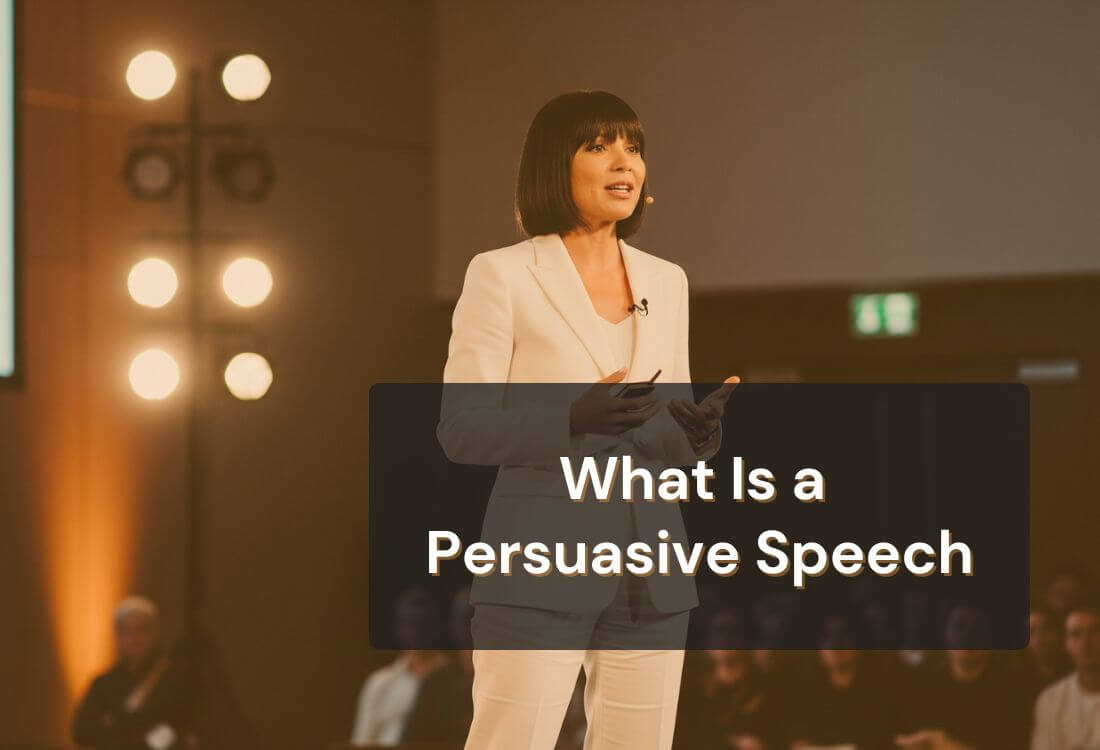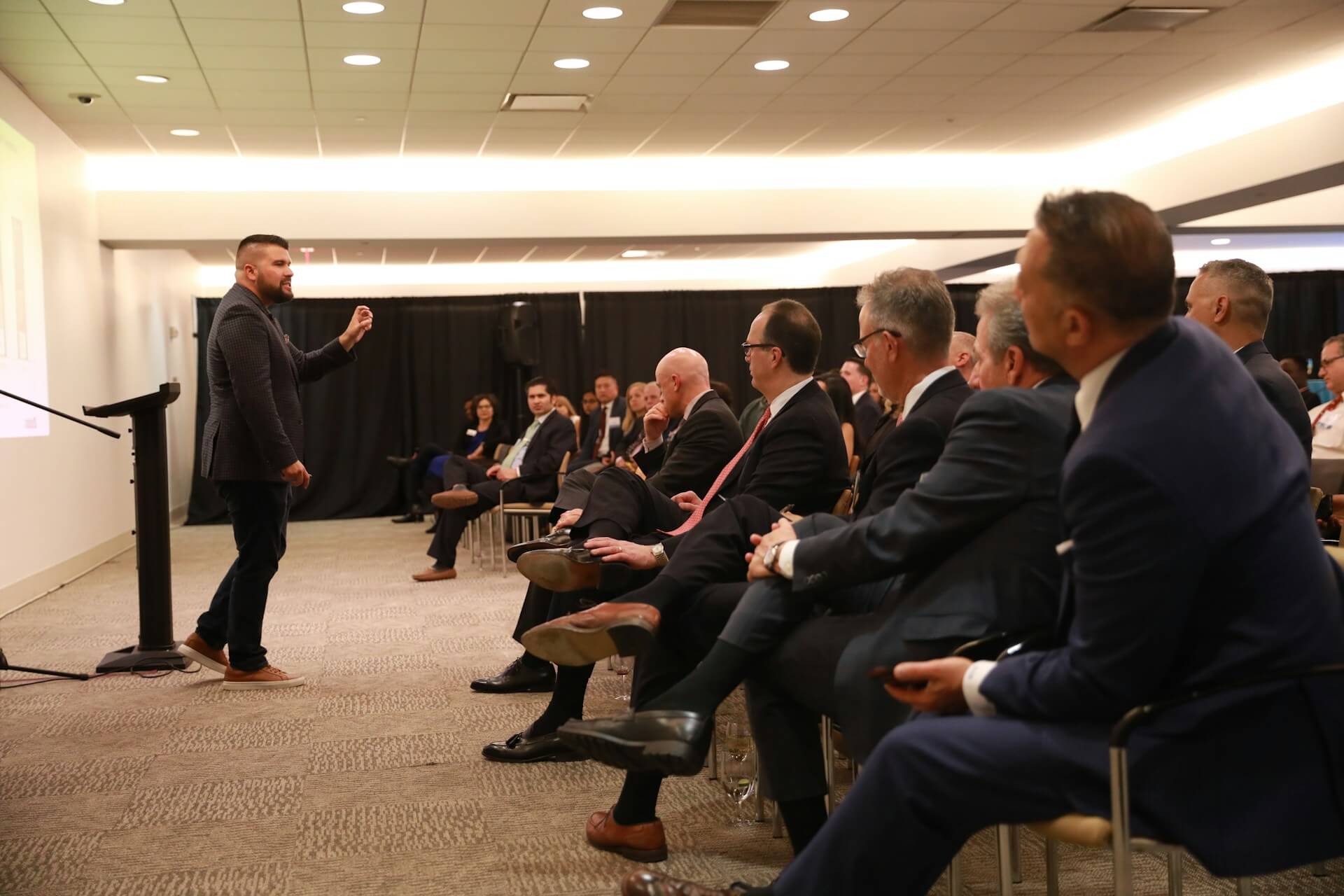



TL;DR: A persuasive speech is a structured message designed to influence beliefs or actions by blending logic, emotion, and credibility. Using clear organization, audience-focused arguments, and a strong call to action helps ensure your message resonates and inspires change.
What is the secret behind a speech that shifts opinions or inspires action? A persuasive speech is a purposeful communication tool designed to influence how people think, feel, or behave. Understanding what is a persuasive speech gives professionals an edge in delivering messages that resonate deeply.
This article breaks down the essential elements of persuasive speaking. You'll learn practical techniques, persuasive speech structure, delivery tips, and real-world examples to help sharpen your influence as a speaker.
A persuasive speech is a carefully constructed message that aims to convince an audience to adopt a particular viewpoint, take a specific action, or change a belief. It blends emotional appeal, logical reasoning, and speaker credibility to motivate listeners.
Unlike an informative speech, which aims to educate, a persuasive speech is designed to shape opinion. Rooted in Aristotle's rhetorical triangle—ethos (credibility), pathos (emotion), and logos (logic)—this format is essential in political campaigns, professional pitches, legal arguments, and public advocacy.
Key traits of a persuasive speech include:
For example, when a nonprofit director urges donors to contribute to an environmental project, they are delivering a persuasive speech. The goal is to inspire meaningful action.

Understanding what is a persuasive speech means knowing how to construct one. Below are the fundamental components.
Audiences are more likely to listen to someone they trust. Ethos is established through qualifications, experience, or shared values. A cybersecurity expert, for instance, gains immediate credibility when discussing digital privacy. Mentioning professional experience or aligning with the audience's concerns builds rapport.
Pathos appeals to emotions such as empathy, fear, or hope. Storytelling is one of the most powerful tools for triggering emotional response. Malala Yousafzai’s UN speech used personal experience to connect with her audience and emphasize the urgency of girls' education.
Logos relies on facts, statistics, and rational arguments. Data strengthens credibility and helps audiences understand the practical benefits of your point. Citing studies or reputable sources like Pew Research or academic publications adds authority.
Every persuasive speech should end with a specific, actionable takeaway. Whether it’s voting, donating, or implementing a new workplace habit, your audience should know exactly what you want them to do next.
A persuasive speech isn’t just about what you say, it’s about how you build your message. Structure creates clarity, keeps your audience engaged, and increases the likelihood that your argument will lead to action. Think of your speech as a journey. You’re guiding your listeners from initial interest to final agreement. A clear, compelling structure ensures they don’t get lost or disengaged along the way.
The introduction is your first impression, and it sets the emotional and intellectual tone for everything that follows. The goal here is to grab attention, establish credibility, and clarify the purpose of your message.
Tips to create a strong introduction:
Pro tip: Avoid generic phrases like “Today I want to talk about…” Instead, jump directly into your narrative or question to set an immediate, compelling tone.
The body of your speech is where persuasion takes shape. This is where you present evidence, stories, and reasoning to move your audience toward agreement.
A strong body includes:
Example: If advocating for renewable energy, you might acknowledge skepticism about upfront costs, then respond with data on decreasing solar panel prices and long-term savings.
Tip for clarity: Use clear transitions (“First,” “Next,” “Consider this...”) to guide your audience smoothly between points.
The conclusion is your final opportunity to leave an impact. It’s not just a summary, it’s a strategic moment to reinforce your call to action and emotionally elevate your message.
Effective conclusions include:
Avoid ending weakly: Never trail off or simply say “That’s it.” The final moment should feel intentional and confident.

Crafting a persuasive message involves more than just writing. Delivery matters. Here are proven techniques:

Understanding the type of persuasive speech you’re delivering is critical for shaping tone, structure, and rhetorical strategy. Each type serves a different purpose and calls for a different emphasis on logic, emotion, or urgency.
These aim to change beliefs, values, or opinions. The audience may not need to act immediately, but you want them to leave thinking differently.
Example topics:
Best used when: You’re introducing a new idea or challenging assumptions.
Here, you want listeners to do something—sign a petition, change a habit, or support a cause. These speeches require a compelling mix of emotion and urgency.
Example topics:
Best used when: You want to trigger behavioral change in the short term.
These focus on advocating for or against laws, rules, or formal decisions. They often include detailed analysis, data, and stakeholder impact. Policy speeches may be delivered to decision-makers or as public calls to action.
Example topics:
Best used when: You're addressing institutional or systemic change, often within a formal setting like a council meeting, boardroom, or public hearing.
In each case, the speech was grounded in a clear message and delivered with conviction.
A persuasive speech is more than a well-argued statement,it's a strategic blend of logic, emotion, and credibility aimed at inspiring action. By understanding what is a persuasive speech and practicing persuasive speaking techniques, you elevate your ability to lead, motivate, and create lasting change.
Your next step? Choose a topic you're passionate about and write a short persuasive speech. Practice with a trusted peer, incorporate feedback, and refine your message. Influence, after all, begins with preparation.
Need help staying on script during delivery? Sign up at Teleprompter.com to present with clarity and confidence using a teleprompter app built for professionals.
A persuasive speech aims to change beliefs or actions, while an informative speech simply shares facts. Explaining climate change data is informative; urging policy change is persuasive.
Typically, persuasive speeches range from 5 to 15 minutes depending on context. TED Talks, for example, are capped at 18 minutes.
Examples include promoting mental health awareness, advocating for sustainable energy, or supporting workplace diversity. Choose topics that align with your audience's interests.
Use storytelling, rhetorical tools like repetition or triads, and support your points with evidence. Focus on tone and audience connection.



